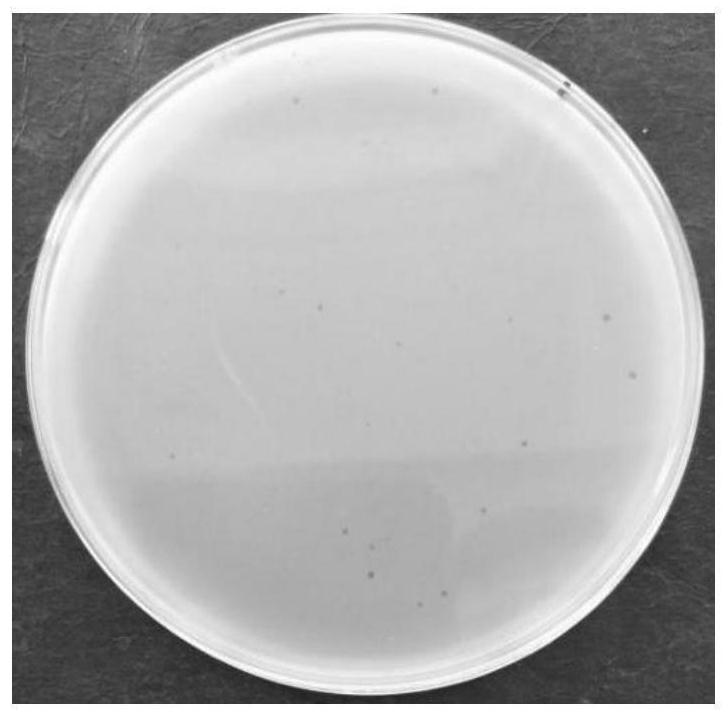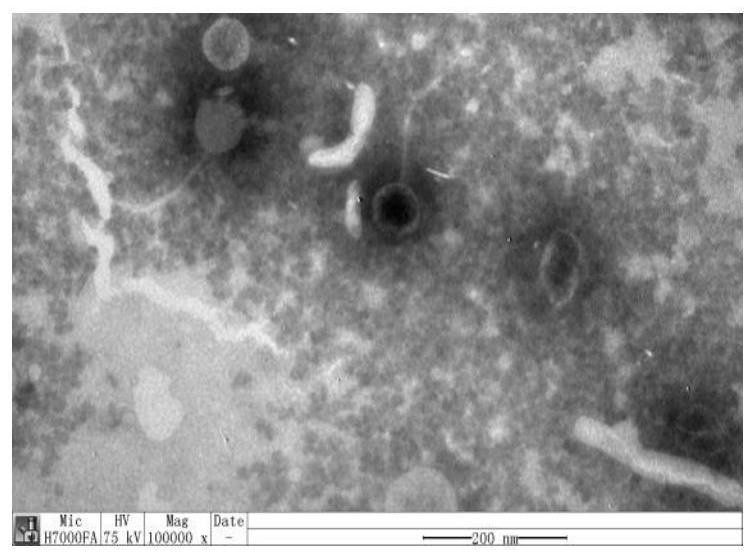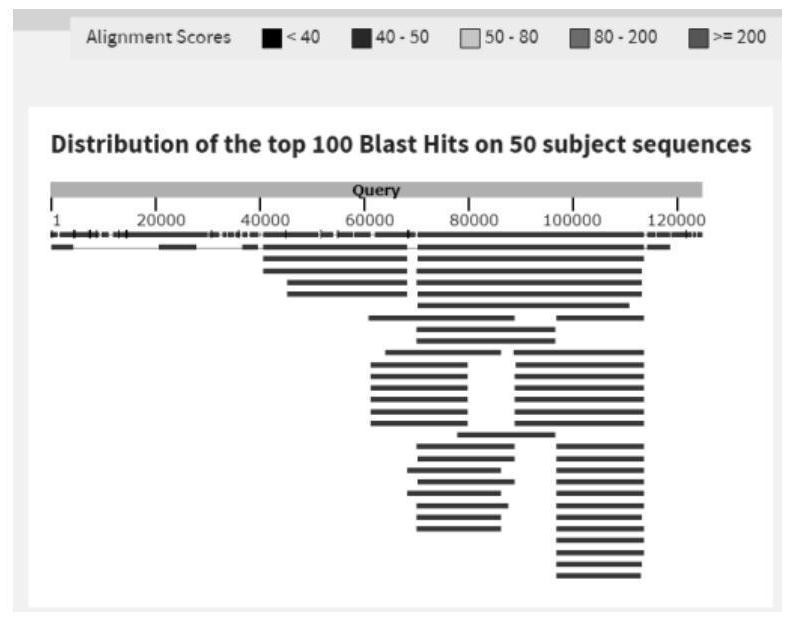Salmonella typhimurium bacteriophage T156 and application thereof
A technology of Salmonella typhi and Salmonella, applied in the direction of phage, virus/phage, application, etc., can solve problems such as less research
- Summary
- Abstract
- Description
- Claims
- Application Information
AI Technical Summary
Problems solved by technology
Method used
Image
Examples
Embodiment 1
[0067] The isolation and screening method of Salmonella typhimurium phage T156 (hereinafter referred to as: phage T156), the steps are:
[0068] (1) Sample collection
[0069] The sewage samples came from the underground sewage channel of a community in Wuhan City, Hubei Province.
[0070] (2) Screening of Salmonella phage
[0071]a. Coarsely filter the collected sewage with filter paper to remove large impurity particles. The filtered filtrate was placed in a 50mL centrifuge tube, centrifuged at 11000r / min at 4°C for 15min, and the supernatant was collected and filtered through a microporous membrane with a pore size of 0.22μm. The filtrate was the required sample and placed at 4°C for later use;
[0072] b. Inoculate Salmonella strain ATCC 13311 into TSB medium, shake culture at 37°C until logarithmic growth phase, take 2.5mL logarithmic phase bacterial liquid, 5mL filtrate and 10mL TSB liquid medium, mix well, place in a constant temperature shaker at 37°C Shake culture ...
Embodiment 2
[0082] Example 2: Determination of bacteriophage T156 host spectrum
[0083] Select Salmonella typhimurium ATCC 14028, ST-8, ATCC 13311, 30, 36, SJTUF 13336, SITUF13350, SJTU 13277, STTUF 13337, SJTUF 13306, 10855, UK 1, 114, 172, 206; Salmonella enteritidis ATCC 1, 114, 172, 206; , SJTUF 10984, 38, 39, 42, 10960, 11561, 201, 211, CMCC 50093, 4917, 4693; Salmonella pullorum CVCC 534, C79-3; Salmonella Dublin 3710, 3723; Salmonella paratyphi B CMCC 50094; Indiana Salmonella 13500, 13520; Salmonella Agora 17, 19, 21; Salmonella choleraesuis ATCC 10708; Salmonella duck CMCC 9270; Escherichia coli DH 5α, BL 21, T 10; Staphylococcus aureus ATCC 29213, 6538; A total of 46 strains of 19115 strains were used for host spectrum analysis.
[0084] Cultivate the above-mentioned bacterial strains (40 strains of Salmonella and 6 strains of other bacteria) to the logarithmic phase, and when the temperature of the upper layer agar (0.7% TSA) drops to 45°C, take 3.8 mL of the upper layer of a...
Embodiment 3
[0091] Electron Microscopic Observation of Example 3 Phage T156
[0092] Set the purified and concentrated phage suspension to ultracentrifugation at 4°C and 40,000r / min for 1 hour. After the centrifugation, the phage will precipitate at the bottom of the centrifuge tube, then resuspend with 0.1mol / L ammonium acetate, and pipette 20μL of the resuspension onto the parafilm Take the copper mesh lightly and place it in the phage suspension, soak it for 10 minutes, absorb the excess liquid with filter paper, then place the copper mesh in phosphotungstic acid dye with a volume fraction of 2% and pH=7 for 10 minutes, and then use the filter paper to remove the Slowly absorb excess liquid from the edge of the copper grid, and let it dry naturally until completely dry. The prepared copper grid was observed under a transmission electron microscope for phage morphology, and its size was measured with the software DigitalMicrograph Demo 3.9.1, and photographed and recorded.
[0093] The ...
PUM
| Property | Measurement | Unit |
|---|---|---|
| length | aaaaa | aaaaa |
| particle diameter | aaaaa | aaaaa |
Abstract
Description
Claims
Application Information
 Login to View More
Login to View More - R&D
- Intellectual Property
- Life Sciences
- Materials
- Tech Scout
- Unparalleled Data Quality
- Higher Quality Content
- 60% Fewer Hallucinations
Browse by: Latest US Patents, China's latest patents, Technical Efficacy Thesaurus, Application Domain, Technology Topic, Popular Technical Reports.
© 2025 PatSnap. All rights reserved.Legal|Privacy policy|Modern Slavery Act Transparency Statement|Sitemap|About US| Contact US: help@patsnap.com



